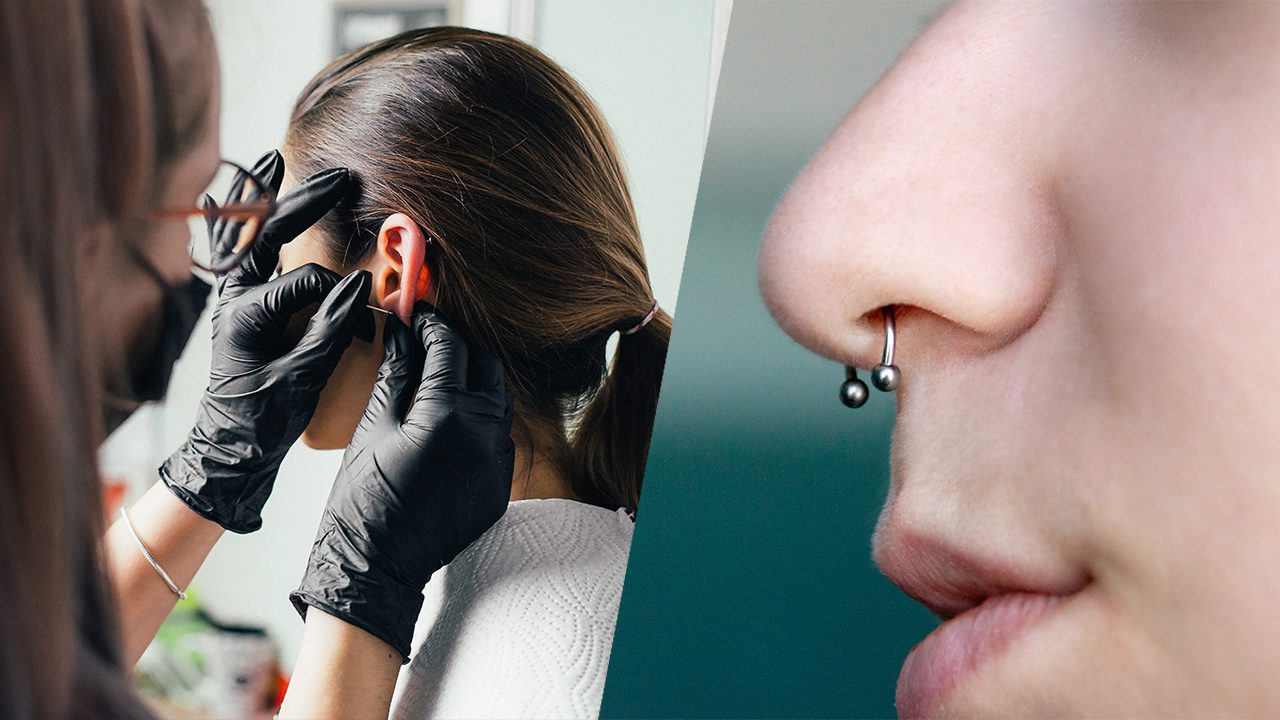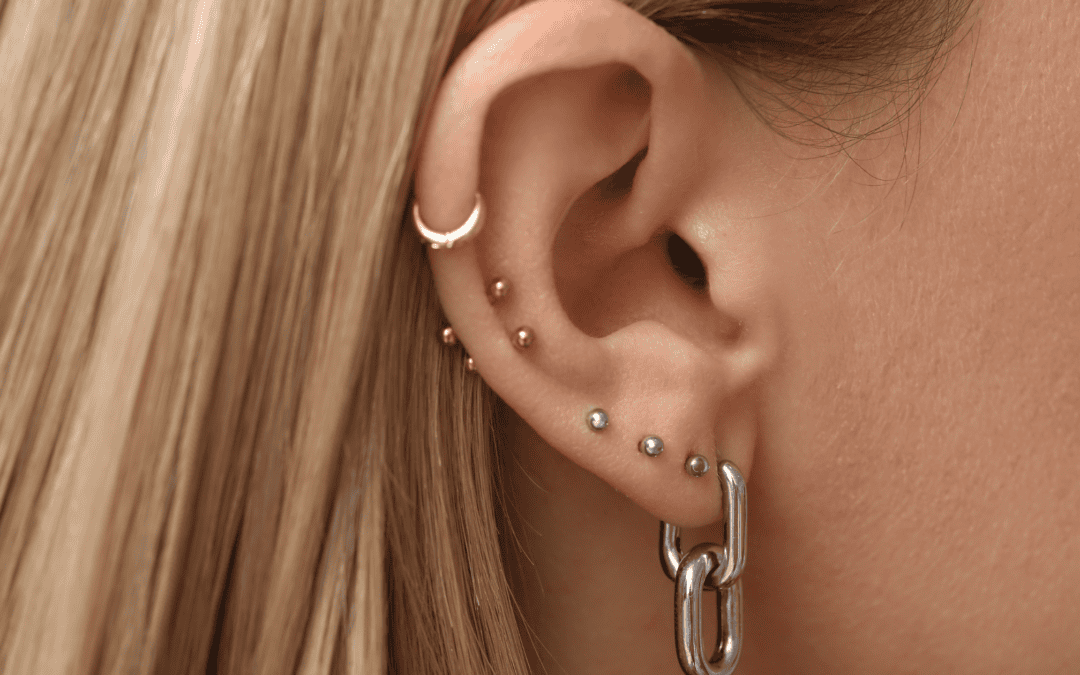Sorting Facts from Fiction in Piercing Care
Getting a piercing can be an exciting form of self-expression, but myths and misconceptions also surround it. Misinformation can lead to poor aftercare practices or unnecessary fears, so knowing the truth behind these myths can make a big difference.

1. Myth: Alcohol Is the Best Piercing Aftercare Solution
Truth: Alcohol can harm your new piercing. Although it’s widely believed that alcohol and hydrogen peroxide are effective disinfectants, they can irritate the skin, delay healing, and cause dryness.
- Safe Alternatives: Saline solution, which is a gentle saltwater mix, is a safer and more effective option. Most professional piercers recommend saline sprays or sterile saline to clean your piercing.
2. Myth: Piercings Will Close Overnight if You Remove the Jewelry
Truth: While some piercings can close quickly, it depends on how long you’ve had the piercing and its location. Newer piercings close faster than fully healed ones.
- Healing Times Vary: Earlobe piercings, for example, may stay open for years, while cartilage piercings might close in hours if they’re not fully healed.
- Best Practice: Wait until your piercings are fully healed before removing jewelry for extended periods, and consult with your piercer if you have concerns.
3. Myth: Piercings Are Always Painful and Difficult to Heal
Truth: Pain levels and healing experiences vary widely based on the location of the piercing and individual pain tolerance. Most piercings only hurt momentarily, and pain is minimal with proper aftercare.
- Healing Factors: Following proper aftercare and choosing an experienced piercer reduces the risk of complications and discomfort.
- Pain Expectations: Areas like the earlobe typically involve minor discomfort, while cartilage and nose piercings might be more sensitive.
4. Myth: Piercings Are Prone to Infections
Truth: Infections are rare if proper aftercare is followed. In most cases, swelling or redness is part of the normal healing process and isn’t necessarily an infection.
- Infection Signs: True infection symptoms include severe swelling, pus, and increased warmth around the piercing site. If you suspect an infection, seek advice from your piercer or a medical professional.
- Preventative Care: Clean hands, sterile jewelry, and following aftercare guidelines can prevent most infections.
5. Myth: You Can Pierce Yourself at Home with a Needle or Safety Pin
Truth: DIY piercings are risky and can lead to infection, scarring, or improper healing. Professional piercers use sterile equipment and proper techniques that reduce health risks.
- Risks of Self-Piercing: Without the proper tools and sterilization, at-home piercings can cause trauma to the skin and increase the chances of infection.
- Why Go Pro?: A reputable piercing studio provides a safer, more sanitary environment, ensuring your piercing has the best chance for successful healing.
6. Myth: Changing Jewelry Early Won’t Affect Healing
Truth: Switching out jewelry too soon can disrupt healing and lead to irritation or infection. Leaving the initial jewelry in place is essential until the piercing is fully healed.
- Healing Timeline: Different piercings have different healing times. Earlobes may heal in 6-8 weeks, while cartilage can take 6-12 months.
- Seek Professional Help: If you need to change jewelry before it’s fully healed, consult with your piercer to ensure safe handling.
7. Myth: Piercings Are Permanent and Can’t Be Reversed
Truth: Many piercings close up naturally when left empty, especially if they are new or located in softer tissue, like the earlobe.
- Closure Variance: Some body parts, like the cartilage, may form scar tissue and leave a small mark, while earlobe piercings can close almost completely.
- Considering Permanence: If unsure about a piercing’s permanence, speak with your piercer to understand the implications before committing.
8. Myth: You Can’t Get an MRI if You Have Piercings
Truth: Many piercings do not interfere with MRI scans. However, for safety, you may be asked to remove jewelry if it contains metal, which can cause interference.
- Alternatives: Non-metal alternatives for jewelry, like glass or plastic, are MRI-safe.
- Check with Your Doctor: Before an MRI, inform your medical provider about any piercings. They can advise you on which pieces need to be removed.
:max_bytes(150000):strip_icc()/GettyImages-1443971731-b8e94d5e35674ab790d73efd7b822ab6.jpg)
9. Myth: Belly Button Piercings Only Look Good on Certain Body Types
Truth: Belly button piercings can suit various body types, and piercers can often find a placement that complements an individual’s anatomy.
- Custom Fit: A skilled piercer will evaluate your body’s shape and contours to ensure the piercing looks its best.
- Confidence is Key: The appearance of any piercing largely depends on personal preference and confidence, not body type.
10. Myth: Piercing Bumps Are Always a Sign of Infection
Truth: Piercing bumps can occur for various reasons, including irritation, injury, or improper jewelry, and are not always indicative of an infection.
- Common Causes: These bumps may result from friction, improper aftercare, or minor trauma during healing.
- Treatment Options: Warm saline soaks, proper jewelry, and avoiding unnecessary pressure on the piercing can help resolve piercing bumps.
11. Myth: All Metals Are Safe for Piercings
Truth: Not all metals are appropriate for body piercings, especially during the healing phase. Some metals, like nickel, can cause allergic reactions and interfere with healing.
- Safe Metals: For initial piercings, opt for metals like surgical steel, titanium, or niobium, as these are less likely to cause irritation.
- Jewelry Quality Matters: Investing in quality jewelry reduces the risk of infection or reactions, ensuring a smoother healing experience.
Making Informed Choices About Piercings
Dispelling these myths can help you make informed choices about piercings, leading to a safer and more enjoyable experience. Consult with a reputable piercer, follow recommended aftercare practices, and feel empowered to make decisions based on facts rather than misconceptions. Whether you’re considering your first piercing or adding to your collection, understanding the truth behind piercing myths can help you achieve the best results.




